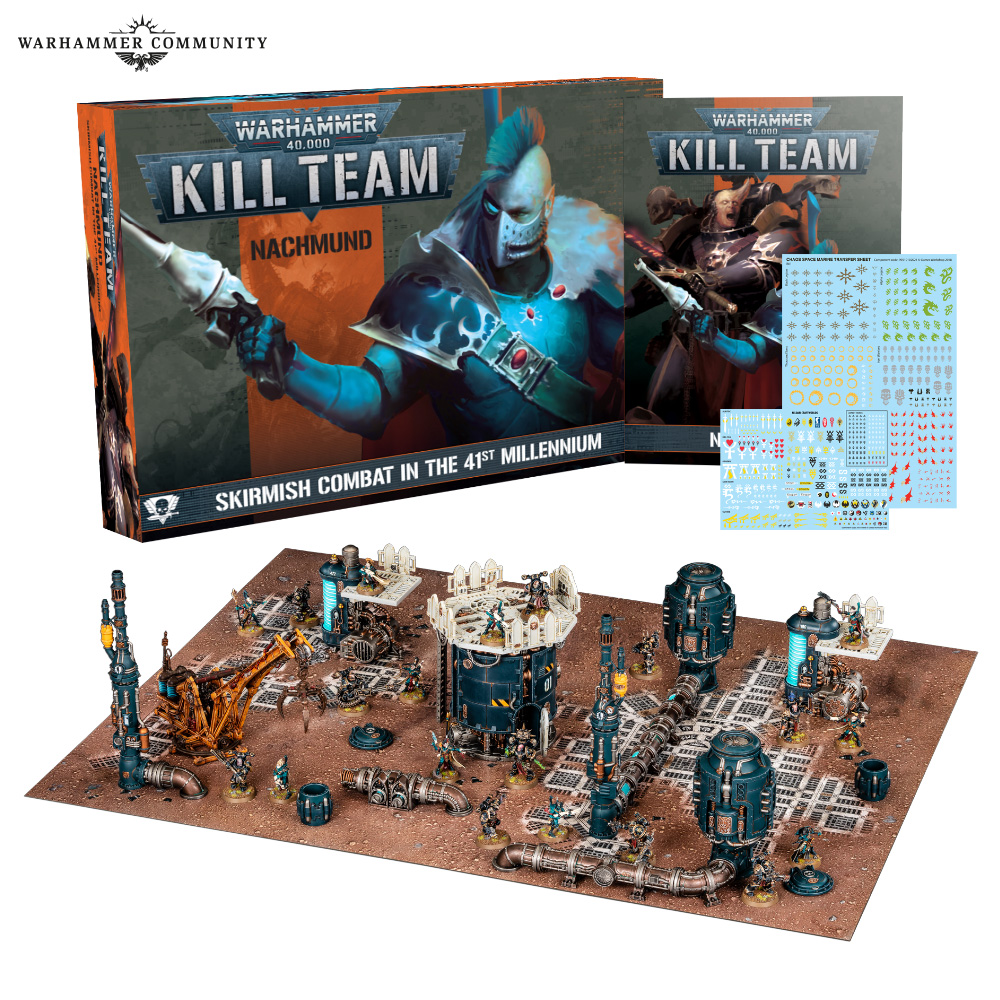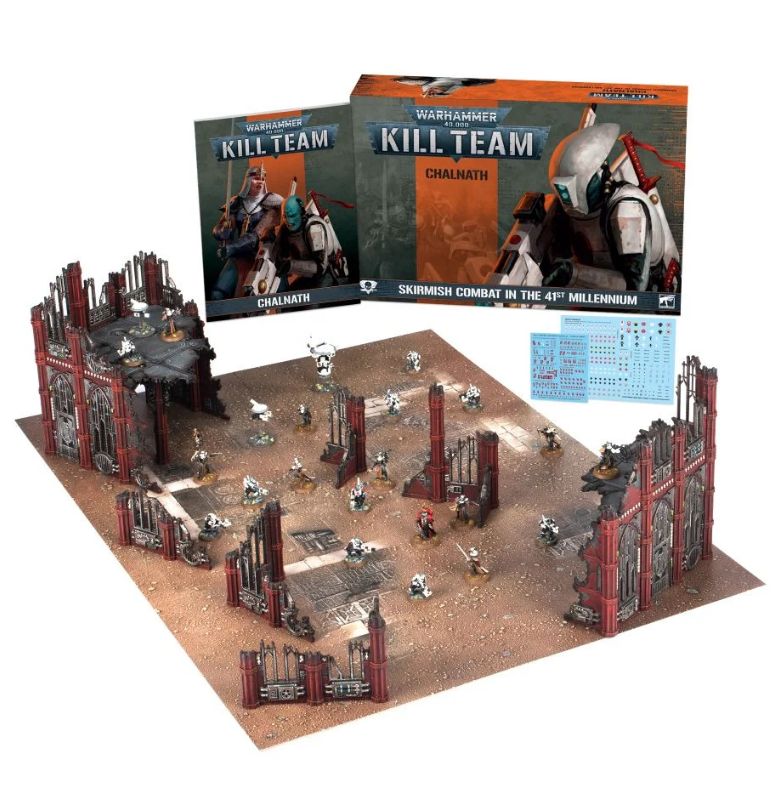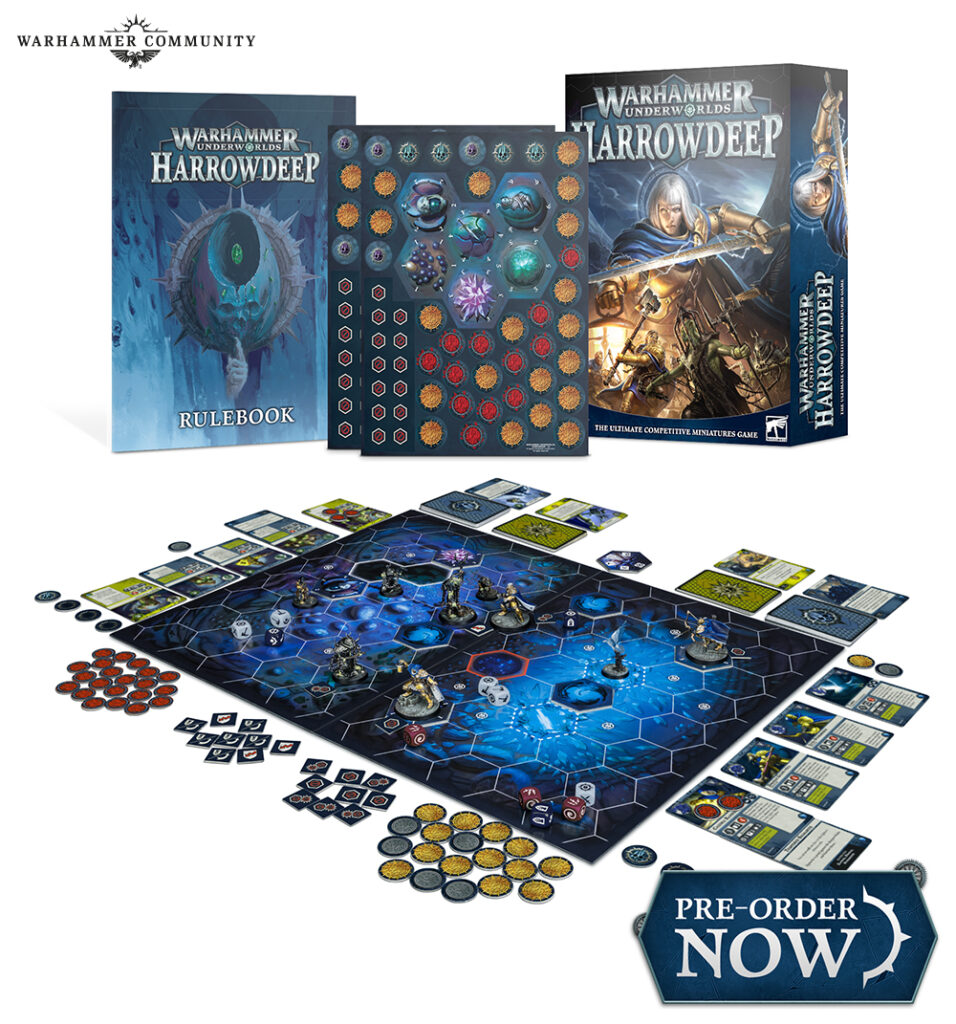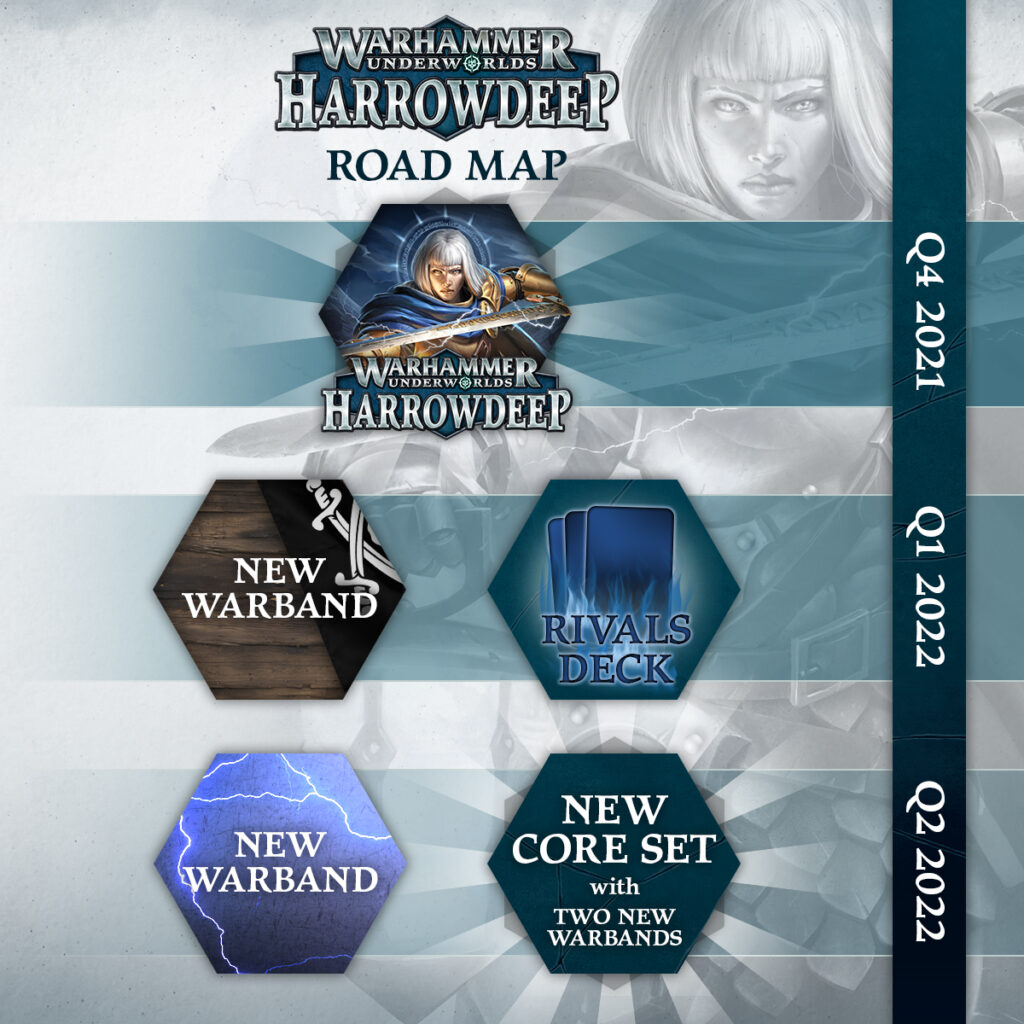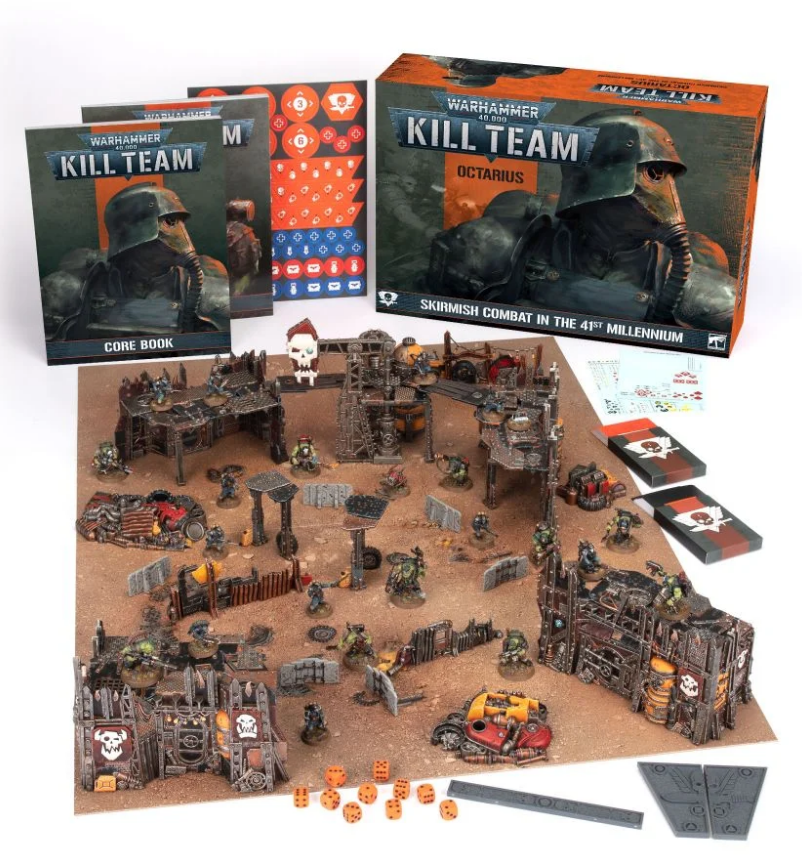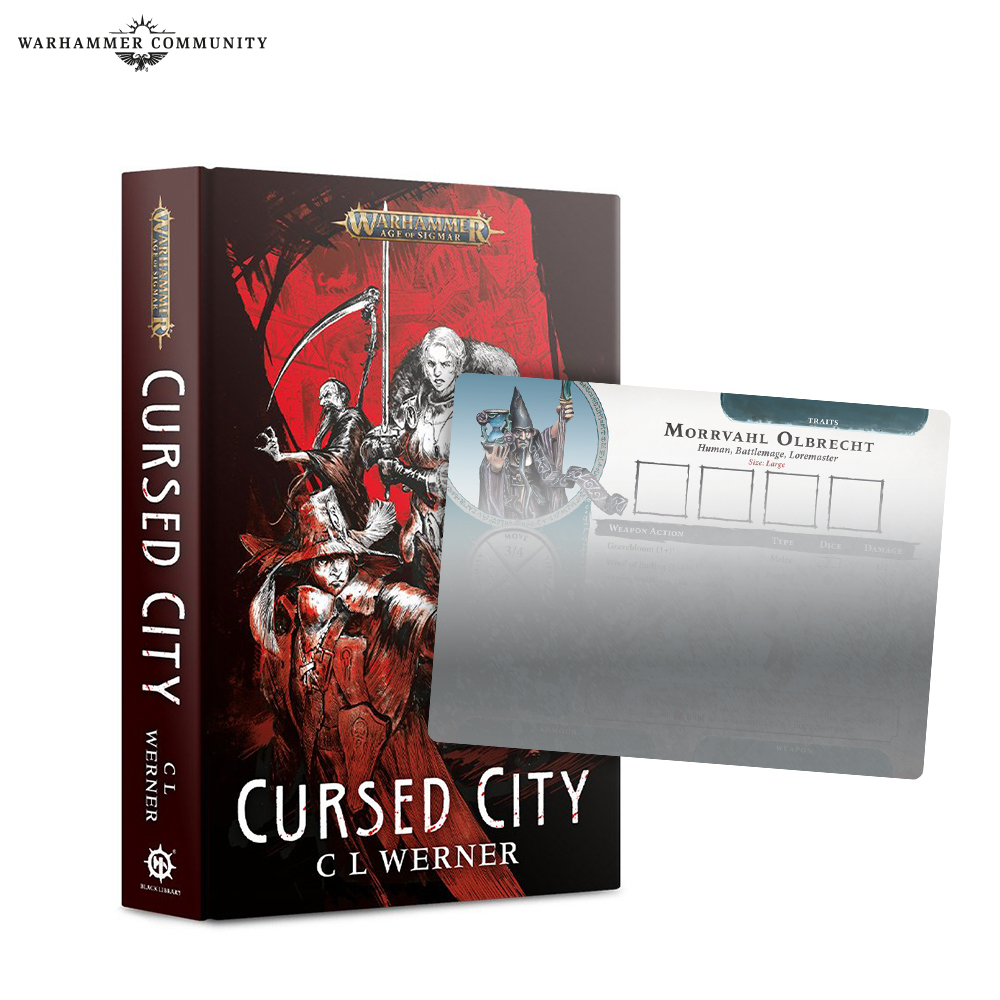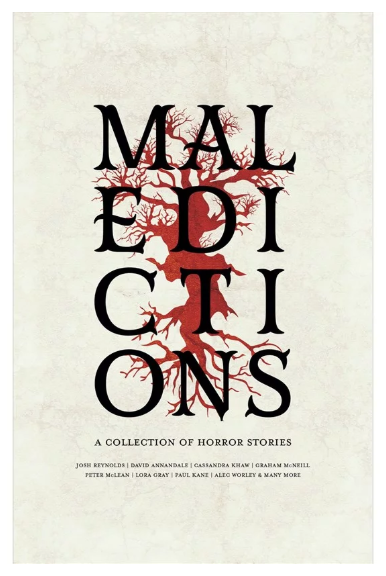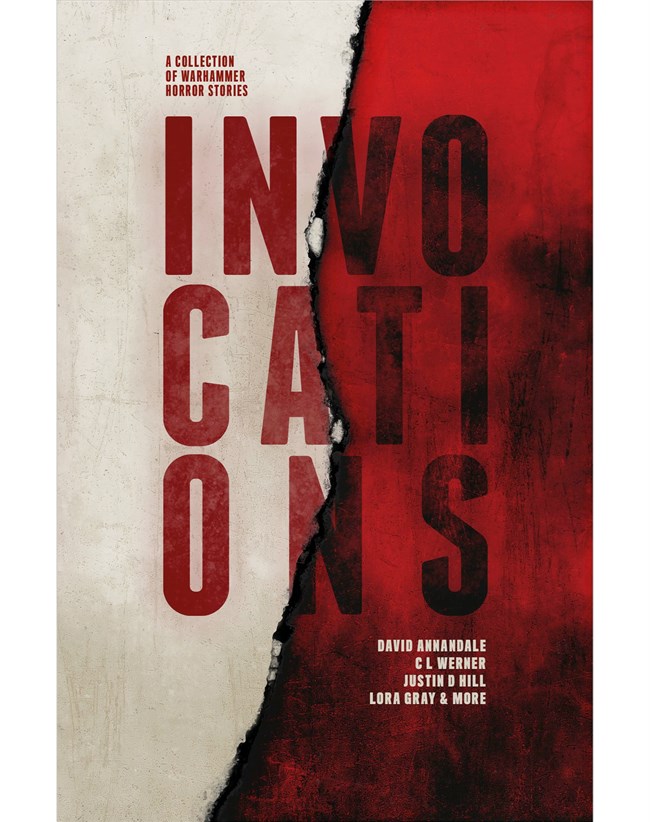C.L. Werner is one of the writers that not only continue to write for The Black Library, but has been doing it for decades. His latest release was Cursed City and is a precursor to the game of the same name.
C.L. Werner took some time out of his busy writing schedule to talk with us regarding Cursed City but warned ahead of time he couldn’t speak out his current projects (he’s admitted to writing two pieces at the time of answering our questions). Before we get to our “Covid-friendly” interview we will discuss our thoughts on the book itself.
Now both the game and novel of Cursed City take place in the city of Ulfenkarn, a city under the tight boot heel of the vampire Radukar, known as the Wolf. Emelda Braskov and her friends must take back control of her city and in the process slay the vampire and his spawn. Competing for control of the city is a secret killer referred to as Baron Grin, this moniker is given due to leaving behind a skeletal grin on his murdered victims. The name of this killer is not all original and doesn’t strike fear by name alone, what’s to be expected though when the name is given by an uneducated populace? I personally would have expected something a bit more sinister but Grin leaves no evidence of his identify other than the victims so it fits. These killings however cause Radukar to take notice as the blood of the victims is tainted and these are the few corpses that he cannot raise from the dead to do his bidding or give him answers. That’s all I’m going to share of the story itself because I don’t want to spoil anything for those planning on reading it.
Personally I have read at least a half dozen of C.L.’s books set in the various Warhammer universes and must say that his Witch Hunter series was always my favorite. Before I started reading Cursed City I had discovered he was in the same Facebook group, themed for the game itself. Soon after I was about halfway through the reading and I reached out to see if he would agree to an interview, as you can guess he agreed. After completing the story I was both impressed and disappointed. Impressed because this was by far the best piece of his I had read and disappointed because he wouldn’t be telling the rest of the tale, the game would do that. As for the game we nearly have the models painted and will review it in the coming month or so.
One thing I love about C.L.’s writing is that it is fast paced, I never wanted to put the book down as I always felt like I was in a state of “we need to see the end of this” before going to bed but then would immediately jump from this fire to the next. Things in the Warhammer worlds are never easy and this novel did a fantastic job of embodying that feeling. With the exception of a couple known characters, Radukar or Braskov for example, any character could die and there were several worth caring about. My personal favorites were always at risk, but the real MVP of the story was Morrvahl Olbrecht, a mage who would go to any lengths to see his goals met. Those lucky enough to get a hardcover copy of the book even got a character card to use in the game and if he performs in game even half as well as he did in the story he will be a must have for players.
As promised above we were able to ask (well, I phrased it as a few but it turned into a bunch of questions) some questions in a covid-friendly manner (I sent him the list of questions and he replied to them all via email). Here are those questions but first I wanted to give a huge thanks to C.L. for taking the time to answer them for us.
JC: Was Morrvahl Olbrecht an original character or was he added to the story after his creation for the game?
CL: Morrvahl is an original character who early on the studio decided that they’d make into a character for the game. The designers did contact me to go over the rules they wanted to do, so that way I could implement them into the narrative. So the character for the game is a bit of a community effort.
JC: How much of the story was mapped before it was determined to be tied to the game?
CL: The game came first and then the novel was planned around the established setting and characters. Mind, the game was still in development, so some things didn’t mesh completely perfectly, but I think it was a smoother alignment than a few other instances where I worked on a story rooted in something that was still in development.
JC: When writing a Warhammer story do you prefer to use original characters or start with at least one known character and build from there?
CL: I think that the fun of doing an established character is writing someone that fans will recognize and who is an actual piece in the games. The danger, however, is that it does limit what you can do with them in a narrative and readers will know that. Kind of hard to make anyone worried if Grey Seer Thanquol will die when they know you can still get rules for him and buy his miniature. Though sometimes the studio will throw people a curve ball, like when Captain Tycho was killed (I think that happened long enough ago that it doesn’t constitute a spoiler any more).
JC: Any chance we will see a return of Mathias Thulmann within Age of Sigmar or was he lost forever to the cataclysm?
CL: I’d never say never, but there’s a danger of too many characters from the World That Was entering the Mortal Realms. Really your best prospects are those associated with Chaos and some of the ‘recreations’ of various undead Nagash has known like Neferata and Arkhan.
JC: I loved that the story ends truly at the beginning of the game itself, is this the ending you hoped for with your story or did you have a more finite end in mind?
CL: The ending was actually changed once the studio decided to start the game off with a jail break. Originally there was a conclusion where the heroes would go to ground somewhere in Ulfenkarn.
JC: Did the model of Radukar the Beast influence your portrayal of the character at all or did that come much later?
CL: The book was just about completed before I saw any of the models. I only had some of the artwork to go off of for the depictions of the in-game characters and things like the Nightguard.
JC: How soon after getting approval from the Black Library did it take to write the book’s first draft?
CL: On Cursed City, I think I worked on it for three months after the outline was approved. I know it wasn’t much more than that as I started The Sword of Surtur not long after.
JC: As a writer outside of the pitch how much free reign were you given by BL on the story? (I’m assuming there were some predefined deaths/survivors)
CL: I was given a lot greater liberty than you might think. Obviously the in-game characters had to survive (hence why, as mentioned above, some of the characters aren’t featured in the game so there’s more ambiguity for the reader about how they’ll fare). The biggest change was in adjusting the capacities of Baron Grin’s cult. Originally they were to succeed in manifesting their ‘saviour’, resulting in a three-way battle between the heroes, Radukar’s forces, and Slaughn. That was felt to take too much of the menace away from Radukar, so we adjusted it to where the cult doesn’t succeed and instead becomes something the Wolf is able to exploit to trap his other enemies.
JC: Do you read works written by other BL authors? If so who do you follow?
CL: I wish I was able to keep up with all the Black Library releases, but I feel woefully behind quite a while back. When I was able to keep up, I was reading William King, Dan Abnett, Graham MacNeill, Gordon Rennie, and Jonathan Green. I follow Josh Reynolds, Nik Vincent, Mike Lee, Nathan Long, David Guymer, Nick Kyme, Chris Wraight, David Annandale, Sarah Cawkwell plus several other authors whose names I’m sure I’m neglecting at the moment.
JC: What tabletop games do you enjoy?
CL: Boardgames I’d have to say Talisman and Zombicide are two standouts. The group I play with really doesn’t do wargaming that’s much more involved than something like War of the Ring or Blood Rage.
As far as tabletop games I collect or have enjoyed in the past, I’d have to say Mordheim first and foremost. I still do Warhammer Underworlds and hope I’ll be able to get Anno Domini 1666 to the table sometime. In the past I’ve played Warhammer Fantasy Battles, Lord of the Rings, and Warhammer 40k, but just haven’t had the time for large-scale armies in quite a few years.
JC: Of those games which is your preferred faction and why?
CL: I generally end up gravitating towards the ‘horde’ type armies. Usually it is the variety on offer that entices me, and the associated lore is usually the tipping point. For anything Warhammer, I’m always drawn to the skaven. Those perfidious ratmen are what made me gravitate to the game back in the early 90’s when my wheel-house was much more into RPGs like Advanced Dungeons & Dragons and Call of Cthulhu.
JC: Kitbash or by the guides?
CL: Usually I stick to the guides, but when you need a really motley horde, for instance Mordor orcs in Lord of the Rings, I’ll start sawing away and swapping heads and such or doing a little sculpting with green stuff.
JC: Is Morrvahls staff unique and if so what’s the backstory?
CL: Gravebloom is a unique magic item, something acquired by Morrvahl to mitigate the toll taken upon him by his harnessing of Amethyst magic. I’m sure a good story could be told about how he came to possess the staff, but as yet I haven’t had an opportunity to write one (though Warhammer Community does have a short story about Morrvahl entitled ‘Nightguard’).
JC: Would you consider writing an origin story for Radukar beyond what has already been provided?
CL: I think an novel about Radukar before he came to Mournhold would be a great idea. I could picture it as being equal parts Sinbad the Sailor and Dracula! Might be something I’ll mention to my editor. (Please do)
JC: How did you come up with the wizards nightmare spell?
CL: That was suggested to me by my editor. It is a call-back to WFB and the spell ‘Arnzipal’s Black Horror’, which would technically be a Dark magic spell rather than an Amethyst one, but with the Lore of Death already being so close to Dark magic its use by Morrvahl is a good indicator of how dangerous his researches have become.
JC: Why did the scholar choose to try and raise Sloan to battle Radukar instead of finding a way to slay him?
CL: Vladrik felt that no mere mortal could overcome a monster like the Wolf, so he fixated on the idea of using a still mightier monster to destroy the vampire, one that would leap at the chance to avenge himself. Hence the decision to try and raise Slaughn and use the daemon prince to kill Radukar. Along the way, of course, the corruption of Chaos seeped into Vladrik and what might have started as an attempt to exploit a creature of Khorne devolved into veneration of the Blood God.
JC: Who was your favorite character from this novel to write?
CL: I’d say it would likely be Morrvahl. I tend to like conniving and underhanded characters because you can never be quite sure what they’re going to do… or why.
JC: What’s the story behind your pen name being your first two initials?
CL: Not sure there’s really much of a story. Many of my favorite authors employ just their initials, so I just followed their example. C. L. Moore, H. P. Lovecraft, and of course J. R. R. Tolkien are all authors who’ve had a big impact on my writing.
JC: Is there anything you would like to plug/mention to our readers?
I would have liked to plug Cursed City… if anybody was still able to buy it (JC: physically anyway)! Maybe a mention of The Sword of Surtur, which is my next most recent release.
It is an entry in the Legends of Asgard series being developed as a part of Aconyte’s literary Marvel Universe range. The novel follows Thor’s older brother Tyr on a quest to try and prevent Odin’s prophesied doom by stealing Twilight, the titular Sword of Surtur from the Fire Giant’s fortress in Muspelheim. The tone I strove for is a bit of alchemy between a Ray Harryhausen movie and classic Marvel Comics of the silver age.
Thank you again for taking the time to answer our questions and we look forward to your upcoming release. For those looking to check out Cursed City I suggest trying your local book stores or checking out the fantastic audiobook on Audible.
